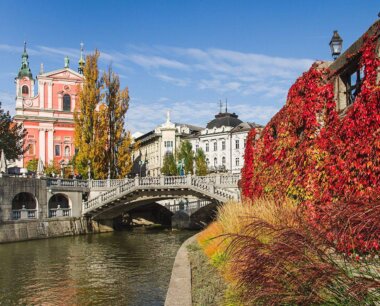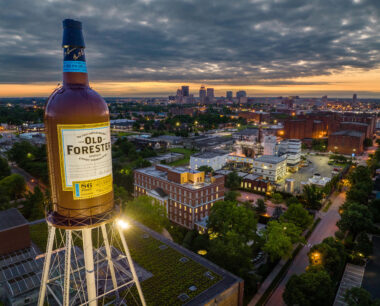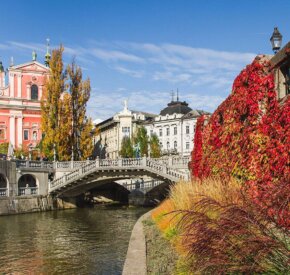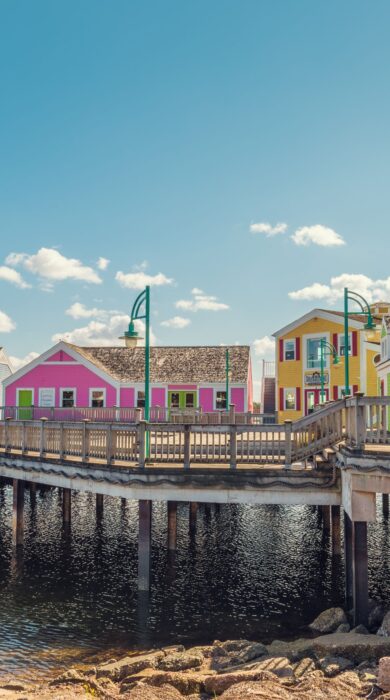
Finding serenity on Prince Edward Island
With its rosy sands, flaming cliffs, ruby-roofed lighthouses and red-headed girl, Prince Edward Island is the hot spot Canadians want to keep to themselves
“We’re being torn apart and – eventually – if we don’t stop what we’re doing we will be swallowed up by the sea.” They were alarming words, particularly coming from your kayak instructor when you’re both a fair way from land. Around me, however, all was calm. The water barely rippled, the surface so flat it was hard to know where sea stopped and sky began. An osprey soared silently overhead.
What Tim Nicholls was actually talking about wasn’t our current activity, but the land we were paddling around – the regally named red sandstone mass of Prince Edward Island, which sits in the Gulf of St Lawrence. When we’d set out from the small town of North Rustico – all bobbing tuna boats, snoozing skippers and primary-coloured rooftops glowing in the sun – everything had looked quite idyllic.
But there’s trouble afoot on this isle: one study has estimated that the coast is being eroded at a rate of 28cm a year, due to higher sea levels caused by climate change. As we paddled toward the headland on the island’s north shore, there was evidence of the attrition: the nose of a giant red cliff lay cracked and slumped on the beach, the base broken like a crumbled cookie.
I gasped sympathetically, but Tim looked unconcerned. “At least it won’t cost much to update the name when we split into three or more,” he laughed, “they just need to add an ‘s’ – we’ll be Prince Edward Islands.” With that he ran his hand through his matted, sun-bleached hair and smiled, every bit the laid-back sea dog.
Born and raised in nearby Nova Scotia, he’s a holidaymaker who never went home. Nothing seemed to faze him; not the wake from a passenger ferry, not the pesky terns dive-bombing us from above, and certainly not the fact that his adopted home was shrinking before his eyes.
Yet this laid-back attitude was a real PEI trait. I’d encountered it the minute I landed – in everyone from the friendly airport security to the relaxed barista who’d made my coffee at breakfast. And here, bobbing along on the tranquil waters, eel grass hissing as it swept beneath my kayak’s hull, curious cormorants watching from atop fluorescent buoys and seagulls gathered around the mussel baskets, Tim’s calm attitude was infectious. It was a truly serene scene.
Birthplace of a nation
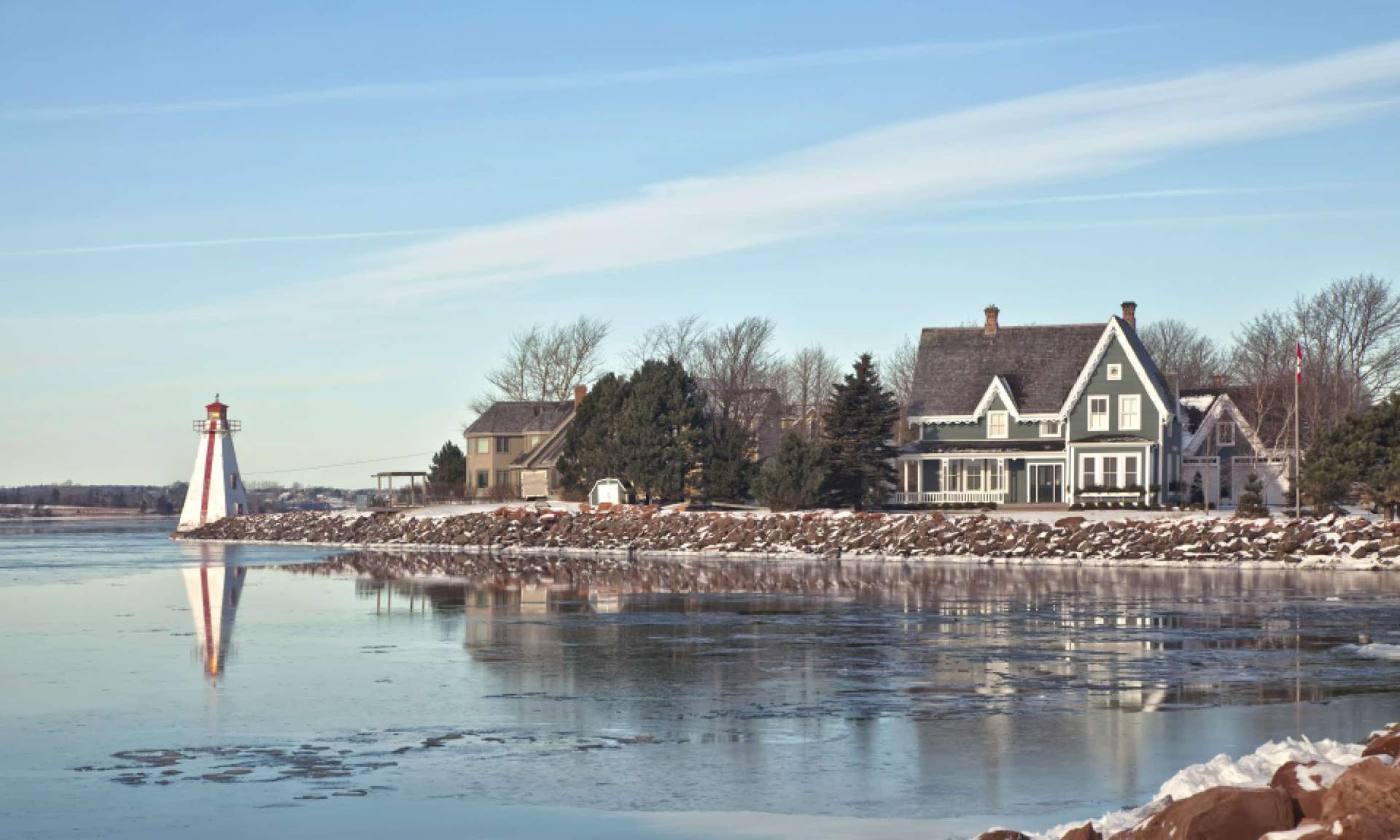
It wasn’t without some growing pains though, although now called the ‘Gentle Island’, PEI has had a fairly tumultuous history. First settled by the Mi’kmaq people, from the 18th century it saw a series of colonial invasions and battles between the French and British, and even a miniinvasion by a couple of Americans during the Revolutionary War.
Best things come in threes
Sunlight seeped through the windows as I picked up my hire car (complete with bike rack and bicycle) and headed north-east from Charlottetown to Greenwich, part of the Prince Edward Island National Park. With over 1,000km of coast, there was obviously a tricky decision to be made to decide which parts deserved official protection; as such there are three separate sections of national park along the north shore, and Greenwich is the furthest east.
This isn’t PEI’s only trio. If you look at a map, you’ll notice – as chilled-out Tim pointed out – it easily divides into three: the eastern end, the central block and the west end. The road planners obviously spotted this too, and have designated three main scenic driving routes to showcase the best of the island: the Central Coastal Drive (divided into the northern Green Gables Shore and the southern Red Sands Shore); the North Cape Coastal Drive (in the west); and the Points East Coastal Drive – which I was now following.
However, as I soon discovered, most roads in PEI could pass for scenic drives. Stopping at Greenwich Visitor Centre I learned that the Mi’kmaq called the island Abegweit, which means ‘cradled by the waves’ or ‘lying flat in water’. The flat bit sounded promising so I grabbed my bike and made for the car-free trails that lie within the national park boundary. I’d been told that this was a popular area for visitors but on two of the three trails I didn’t meet another soul.
As I looped round the wooden boardwalks and sandy tracks I mused how busy it might have been when the Mi’kmaq were here. Archaeological digs have unearthed relics dating back over 10,000 years, revealing it to be a gathering place. Now it was quiet except for the click of my pedals. For the final trail to Greenwich Dunes I had to go on foot.
As I plunged into woodland, I heard movement overhead. A red squirrel emerged, scuttled along a branch, eyed me suspiciously, then disappeared in a crimson flash. Elated by this sighting, I continued on to a reed-fringed pocket of water where I spied wild roses, bayberry and beach pea; a northern harrier watched on from a tree. When I reached the dunes, the trail’s namesake, there was only a handful of people there.
The sand glowed with a pinky sheen and the long grass rustled lazily in the breeze. If I’d managed to find a popular spot so quiet on a sunny day in August, it was no wonder Canadians aren’t keen to shout about this island sanctuary. Mesmerised by the serenity of this beautiful place, I wanted to check out the wilder side of the island, so I set a course for the little-visited North Cape.
Alone with Anne

Leaving the other visitors at the house, I passed the afternoon wandering ‘Lover’s Lane’ and the ‘Haunted Woods’, the places I’d read about in my childhood brought to life before my eyes. It left me in such high spirits that even the strip of Gables-themed giftshops, motels and car number plates lining the road out of town couldn’t bring me down.
The wild west
Almost as soon as I’d passed the island’s second city of Summerside, the landscape and people changed. Agriculture is the big industry here. Sandy beachfronts were replaced by rolling fields of vermilion-coloured soil. The fishing villages became more functional than pretty – the fishermen more interested in hauling their loot rather than offering boat rides to tourists – and the hamlets became increasingly small.
I stopped at Tignish Shore Beach, where there were no bathers, only a man picking seaweed. “Irish moss,” he explained in an accent that sounded somehow different to those of the islanders in Charlottetown. “I gather it then sell it.” He went back to his picking and I looked a little closer; it was rubbery in texture.
Around half the world’s Irish moss comes from PEI. It’s harvested for its carrageenan, used as a thickener and stabiliser in everything from shampoos and toothpaste to ale and ice cream. Collectors use horses to drag baskets through the shallow water where it gathers, but it also appears on the shore after storms. I continued on to North Cape. As it’s the most northerly point on PEI I’d expected to be greeted by a giant lighthouse.
Instead a wind turbine blade marked the spot (hiding a tiny lighthouse) along with a research station and a museum dedicated to the natural power being harnessed here. It was an indicator that problems with climate change are being addressed. And not before time: signs warned of the crumbling cliffs, which mixed with the sea, tinging the frothy wake blush pink. It was deliciously wild.
To the lighthouse I may not have found the lighthouse I’d hoped for at North Cape but I made up for it that evening at West Point, where my accommodation for the night was a working lighthouse. Situated on the westernmost part of the island – and an easy drive from the town of O’Leary and the Canadian Potato Museum (yep, PEI has one of those too) – West Point Lighthouse was built in 1875 to warn seafarers of the vast reef that sits offshore. It’s one of 63 lighthouses on the island; over half are still active, though they’re all automated these days.
West Point was manned until 1963, and had just two keepers, the first of which was William MacDonald (aka ‘Lighthouse Willie’) who, in his 50 years on duty, never had a single night off.
It was close to sunset as I climbed the steps to the top of West Point’s stripy tower. The deck was empty. The beam glowed an eerie shade of luminous green, turning on its endless cycle, its bright light slicing through the darkening waters. From here I could see the bronze silt sneaking its way north towards the horizon; alongside I could make out the point where two tides collided, marking the end of the reef.
There are numerous ghost stories attached to this spot – from purported sightings of the aforementioned Lighthouse Willie, to the apparition of the flaming phantom ship, which continues to burn after its ill-fated crew made a pact with the devil. Less fantastical was the tale about the islanders who tried to start a ferry service between here and the neighbouring province of New Brunswick. They weren’t successful, and now the only two ways on and off the island that don’t involve flying are the Confederation Bridge at Carleton and the ferry to Nova Scotia from Wood Islands.
I’d see the former on my way back to Charlottetown the next day, along with fields of golden grain, honesty boxes offering homegrown potatoes and the postcard-perfect hamlet of Victoria-by-the-Sea. But right now, perhaps selfishly, I was glad that there was no link to the rest of the world from this remote point.
I wandered down to the secluded beach and stood, skimming stones, watching the sun sink below the water, turning the sand orange. I stood and watched the waves that are reshaping this landscape. But, much like Tim, I wasn’t going to worry about that right now. Instead, unlike lighthouse-keeper Willie, I was going to take a night off to just enjoy this beautiful island.
Main image: Lighthouse at Dalvay, PEI (Shutterstock)
